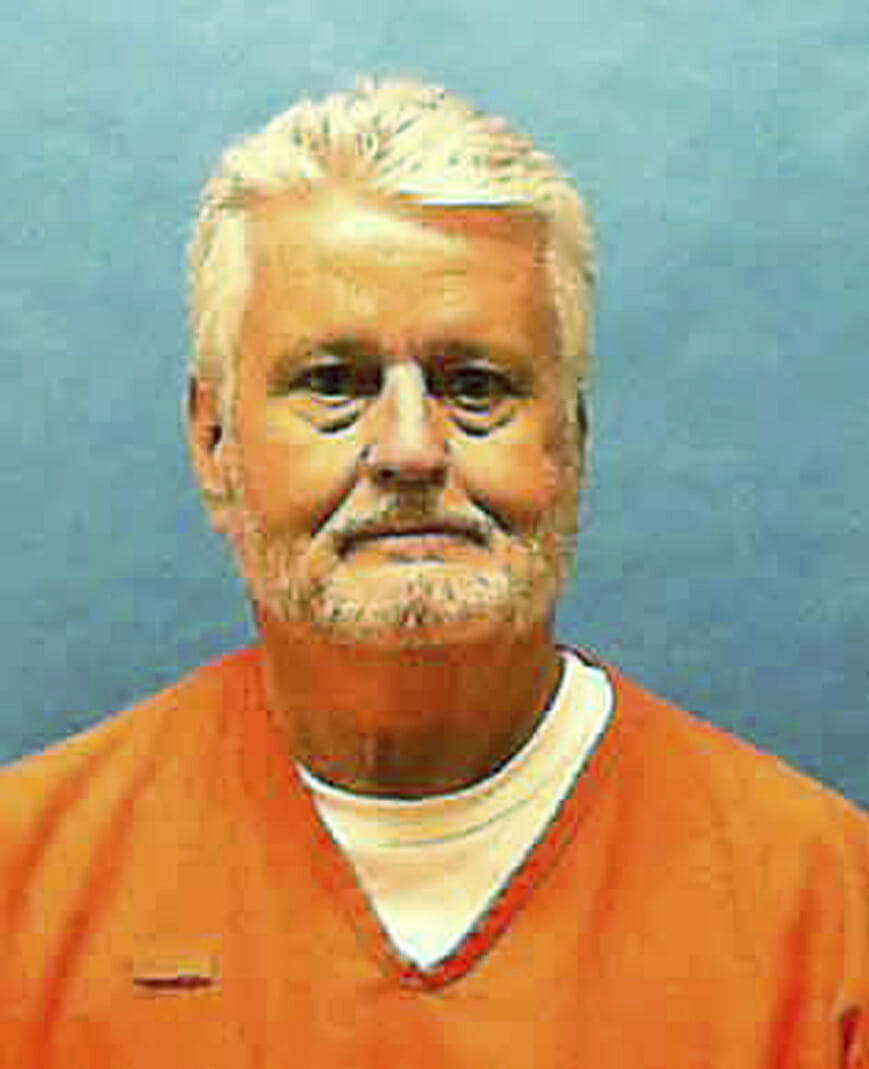
Survivor recalls Florida serial killer as he's set to die
STARKE, Fla. (AP) — A serial killer who terrorized Florida with a murderous spree that claimed 10 women in 1984 was put to death Thursday, his execution witnessed by a woman who survived one of his attacks and aided in his capture.
Bobby Joe Long, 65, was pronounced dead at 6:55 p.m. Thursday following a lethal injection at Florida State Prison. Long had no last words, simply closing his eyes as the procedure began, witnesses said.
The killer terrified the Tampa Bay area for eight months in 1984 as women began showing up dead, their bodies often left in gruesome poses. Most were strangled, some had their throats slit, and others were bludgeoned.
Law enforcement had few clues until the case of Lisa Noland, who survived one of Long’s attacks. She witnessed Thursday’s execution from the front row.
Just 17 in 1984, Noland was abducted by Long outside a church that year. He raped her but ultimately let her go free. She left evidence of his crimes on the scene and gave police details leading to his capture. Long confessed to the crimes, receiving 28 life sentences and one death sentence for the murder of 22-year-old Michelle Simms.
Noland positioned herself in the witness room where she hoped Long would see her.
“I wanted to look him in the eye. I wanted to be the first person he saw. Unfortunately, he didn’t open his eyes,” she said. “It was comforting to know this was actually happening.”
She said she began to cry after she left the room once it was over.
“The peace that came over me is a remarkable feeling,” she said.
Another witness wore a polo shirt with a photo of one victim on the front and the words “Gone But Not Forgotten.” On the back were photos of all 10 slaying victims and the words, “The Ones That Matter.”
Noland was the victim Long let go. The day before her abduction, she said, she had written a suicide note, planning to end her life after years of sexual abuse by her grandmother’s boyfriend.
But she ended up making heroic use of that history.
“At the time he put the gun to my head, it was nothing new to me,” she told The Associated Press earlier this week.
She said she knew from her past abuse that if she fought Long, it would enrage him.
“I had to learn who he was, what made him tick. If I did the wrong move, could it end my life? So literally, the night before I wrote a suicide note out, and now I was in a position where I had to save my life,” she said on Wednesday.
Investigators were baffled by the trail of bodies Long left around Tampa Bay. Artiss Ann Wick was the first killed, in March 1984. Nine others followed.
Law enforcement had few clues until Noland told her story.
Noland said beforehand that she knew what she would have said if she could have addressed Long. Said Noland: “I would say ‘Thank you for choosing me and not another 17-year-old girl.'”
“Another 17-year-old girl probably wouldn’t have been able to handle it the way that I have,” she said.
Long moved from West Virginia to the Miami area as a child and was raised by his mother, a cocktail waitress. After high school, he married his childhood sweetheart, but later became violent. The ex-wife, Cindy Brown , told AP she recalls fearing for her life as the attacks grew worse, including a day he choked her and knocked her unconscious.
In the AP interview Wednesday, Noland described her attack in excruciating detail: the church where Long abducted her, the gun he pressed to her head, the bright light she could see on the car’s dashboard beneath the edge of her blindfold. It said Magnum, as in Dodge Magnum.
She was menstruating and made sure she left blood evidence on the car’s backseat. She could tell when they were on an interstate north of Tampa. When she was brought to the killer’s apartment, she counted the steps up to the second floor. When he let her use the bathroom, she made sure she left fingerprints everywhere.
She knew she couldn’t make him angry. She appealed to a glimmer of kindness he showed while he washed her hair after raping her repeatedly. She asked what made him do what he did. He said he had suffered a bad breakup and hated women. She told him he seemed nice and that maybe she could be his girlfriend. She wouldn’t tell anyone.
Long later got Noland dressed. He let her loose and told her not to take the blindfold off for five minutes. She got out of the car and tripped on the curb. Long caught her before she fell. She waited for what seemed like an eternity and pulled off the blindfold. She was in front of a tree in another churchyard.
Today, she claims that tree as hers, and included it in the design of a T-shirt she made to mark Long’s execution.
And she’s joined the ranks of the law enforcement officers who captured Long. She’s a deputy with the Hillsborough County Sheriff’s Office, the same department she helped lead to Long’s arrest.
_____
Associated Press writer Curt Anderson in Miami contributed to this story.
The Western Journal has not reviewed this Associated Press story prior to publication. Therefore, it may contain editorial bias or may in some other way not meet our normal editorial standards. It is provided to our readers as a service from The Western Journal.
Truth and Accuracy
We are committed to truth and accuracy in all of our journalism. Read our editorial standards.
Advertise with The Western Journal and reach millions of highly engaged readers, while supporting our work. Advertise Today.












